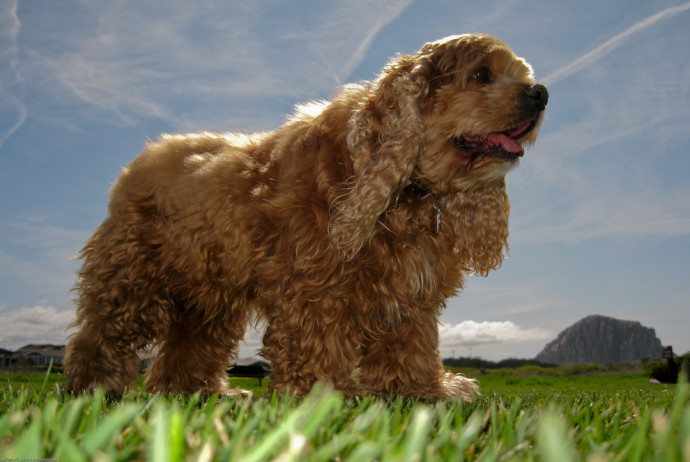Although retired from this debate for sometime, I am disturbed to hear RCVS is trying to stir up a hornet’s nest on the above subject. One wonders if half the time devoted by the professions politicians to puppy dogs tails had been spent looking after the health and welfare of the countries cattle may we have avoided BSE.
I would suggest that before its ruling Council acts upon such an ‘initiative’ there are a number of questions to be addressed. Whilst the Docking issue, much loved by those posing as welfare activists, has, inside and out of the Convention been a controversial issue. The accolade, for the most contentious issues, has to go first to ‘Article 5 Breeding’ and thereafter to ‘Article 2 Scope and implementation”
I have in front of me a copy of a letter written in 1995 by Mr Roger Green (then Chairman of the FVE Animal Welfare Working Party) in which he castigates HM Government for failing to prevent Docking. This castigation was in spite of said government having, on false premise, done precisely what the RCVS had asked of them i.e amend the Vet Act. I mention this point because, how ever right or wrong the College maybe, it certainly has the right to seek to amend the act under which it operates. I see nothing in that act that gives the RCVS the right to indulge itself in this present ‘initiative’.
Nobody is going to deny the RCVS interest in Welfare. It is, after all, the reason it was given an Act of Parliament. Ensuring, it was hoped, that that the owners of animals could rely on a certain level of competence in the treatment of their animals. It was not given a privileged position to pontificate to those owners. Nor indeed to those in the profession itself, who have undergone the required training for them to offer reasoned and competent advice to those requiring it. Whilst the members of RCVS have the privilege of giving advice this should be unfettered.
The docking issue is merely a tool, which power freaks, inside and out, of the profession wish to use to determine that they can enforce their views on others. Once a precedent is established who knows what might follow? I will return to how the RCVS could and should, within the provisions of the Veterinary Surgeons Act, enhance animal welfare
Back in 1995 an associate and myself endeavoured to establish who was orchestrating this Convention. After many letters and telephone conversations it was clear that in the main the input was Veterinary. Both the BVA and the then President of the RCVS tried to distance their organisations denying an involvement. [Much to the embarrassment of some Euro; officials. Veterinary & Council] But it became clear that UK involvement in the FVA was and had been considerable and in the formulation of many of the proposals may well have been fundamental. It seems more than likely that the FVE was responsible for most if not all of the input.
It was in the course of these enquiries that Mr Green’s letter [mentioned above] was received. It contained the following paragraph: –
“The FVE as a fully participating observer Expert on ETS125 has been invited to comment in general upon the breeding of Pet Animals. In order to be adequately briefed the Animal Welfare Working Party of FVE that I chair has commissioned the Danish Veterinary Association to prepare a paper on the subject consulting widely. This paper will be discussed at the next Working Party meeting in Brussels with a view to formulating policy for the FVE to promote at the next meeting of ETS125 in Strasbourg next year. The FVE delegate to ETS125 is Greek, Dr Ben Albalas. He is an internationally well known small animal practitioner and a Vice President of EFCAVA the European Federation of Companion Animal Veterinary Associations of which the British Small Animal. Veterinary Association is a member. Any opinions expressed or papers submitted to eminent organisations such as the Council of Europe are fully researched and agreed by all delegations beforehand”.
As far as I am aware, the said paper has not been published in the UK? If not why not? From the words and expressions used it would appear that this would be an important and informative document – “Consulting widely” Who? “Fully researched” By what means? It should surly be made available to those who the RCVS wish to consult. Mr Green obviously set great store by it!
This Convention thus far concentrates, in spite of its PET ANIMALS title, almost exclusively on the pure bred version of one species. Namely the dog. In connection with article 5 a resolution is adopted which pillories just about every breed that comes to mind and the Entlebucher Cattle dog, which doesn’t. [IT is condemned for having a “semi lethal” factor. It does have a stub tail and requires its dewclaws removed. Yes! That must be the lethal factor!] The Convention even has the audacity to threaten consequences!
Now whilst it cannot be denied that all breeds have their share aberrations so do all spices, not least the human. Dog breeders work hard to eliminate these. It is part of their aim in life and it is usually at some expense to themselves, and advantage to the profession. We are not talking about those difficulties we are talking about differences of opinion in appearance. Again, notice how things you cannot see, like heart defects, – which Boxer breeders have been particularly diligent about, – fail a mention? No, the main concern with the Boxer is his teeth [or could it be that he is a docked breed]. Why are we not concerned about crossbreds, mongrels and other species?
It is the SPECIFIC NATURE of the contents of this Convention that make it totally unacceptable! The COUNCIL OF EUROPE is not a legislative authority. Although others would wish and will try to alter and manipulate the status of the COUNCIL [note the attempt, once again, to use the docking issue to try to establish by precedent a power to legislate] The Council is and should remain a debating forum for the establishment and agreement principals: –
“The Council’s aim of establishing greater unity among its member countries is achieved through: International treaties (“European Conventions”) which prescribe reciprocal obligations and lay down common standards, rules and practices, joint action decided by the governments: the continuous pooling of information and experience. Its overriding concern for the individual, his rights and his freedoms, is reflected throughout its activities.” (Dod’s)
Which brings us to the suggested advice that HM Government should sign and ratify ETS 125. What precisely do the RCVS want the Government to do? Sign a blank check perhaps!
Under Article 2, “Parties to the convention undertake to take the necessary steps to give effect to the provisions of the Convention “. This should be within 6 months of ratification. This is the legislation bit. Have the College considered the WHAT, WHO and HOW of the matter? [Because they are not now posing in Europe, we are here back in the UK] Somebody has to formulate ‘precise detailed legislation’ because of the ‘detail’ that has been written into the Convention. Who is going to supervise and police such provisions? How exactly do the proposes see the legislation working? If the response to the Colleges consultations is to be in anyway meaningful these questions have to be addressed!
Whilst it may well be different for Dr Ben Albalas in Greece, in the UK we have, in the 1911 Act. Probably the best and most flexibly enforceable of Animal welfare provisions. We don’t need this Convention.
Now before closing I should like to return to the matter of the Colleges involvement in Welfare. We will all agree that an animal’s welfare may well be determined by its owners ability to obtain satisfactory and affordable Vet treatment and in this respect the role of the RCVS is crucial: –
Why are the public not offered an appeals and arbitration procedure similar to that of the Legal profession?
Why is the College not regulating the charges made for drugs?
[Much is made of the high cost of drugs but why should the profession benefit from that cost by virtue of a mark up beyond the cost of dispensing? If an animal has a prolonged requirement for a drug why should this benefit the Vet?] [As far as the drugs themselves are concerned The Medicines Directorate notes on drugs reveal just how a change is needed to offer benefit to both profession and customer]
Should the Profession not establish a much broader approach to specialisation and diploma qualifications?
[Especially in the field of surgery where there appears to be little restriction]
The Trading legislation provides exemptions on the basis that the profession is self-regulating, so the publics redress in these matters is restricted. It would therefore be nice to see the RCVS spending more time on matters within its own competence and less on interfering in other people’s interests.
Ron Henney. Warwickshire


